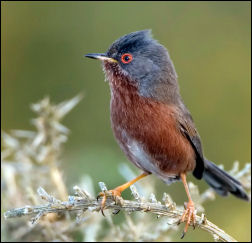Channel Islands

The recording area of the Channel Islands (area 113 in the Watsonian system) corresponds to an archipelago in the English Channel, which lies within the Gulf of St Malo less than 12k off the French coast of Normandy. These islands include two independent countries that are UK Crown dependencies*: the Bailiwick of Jersey, the largest of the islands along with some tiny uninhabited islands; and the Bailiwick of Guernsey, which consists of the islands of Guernsey, Alderney, Sark, Brecqhou, Herm and Jethou and a number (13) of other tiny, uninhabited islands. They are considered the remnants of the Duchy of Normandy and, although they are not part of the United Kingdom, the UK is responsible for the defence and international relations of the islands. The Crown dependencies are not members of the Commonwealth of Nations or of the European Union. *The other Crown Dependencies are the Isle of Man and a number (14) of British Overseas Territories. “Channel Islands” is a geographical term, not a political unit. The two bailiwicks have been administered separately since the late 13th century. Each has its own independent laws, elections, and representative bodies (although in modern times, politicians from the islands’ legislatures are in regular contact). Any institution common to both is the exception rather than the rule.
The Channel Islands have a total population of c.172,000, and the two bailiwicks’ capitals, Saint Helier and Saint Peter Port, have populations of c.33,500 and c.18,500, respectively. The total area of the islands is just under 200 km2.
Birding the Channel Islands
The very large tidal variation provides an environmentally rich inter-tidal zone around the islands, and some islands such as Burhou, the Écréhous, and the Minquiers have been designated Ramsar sites. The close proximity of continental Europe is reflected in the islands’ flora and fauna. The Channel Islands are like a huge motorway cafe for migrating and over wintering birds. Falls of birds occur during the spring and autumn migrations and during hard winter weather huge movements of birds pass through when they are escaping frozen conditions on mainland Europe and Britain.
Around 200 bird species are recorded every year (although the list differs annually) despite the fact that the islands have only about 80 breeding species. Some species which are scarce, or absent as breeding birds on the mainland of the United Kingdom do well here. Short-toed Treecreeper, Serin, Dartford Warbler, Cetti’s Warbler, Bearded Tit, Zitting Cisticola and Cirl Bunting have all bred in recent years.
Resident birds are augmented during the nesting season when, in addition to the passerine summer visitors, thousands of seabirds nest on cliffs and rocky islets. Spring and Autumn can produce overshooting continental birds with species such as Hoopoe, Golden Oriole, Zitting Cisticola and shrike species all seen regularly. Seabirds feature strongly in the annual records. Apart from those breeding such as Northern Fulmar, Atlantic Puffin, Razorbills etc., there are good autumn passages (mainly October to December) of three species of divers, sea-ducks, Brent Geese, auks and Little Gulls, amongst many others.

-
Number of bird species: 348
-
iGoTerra Checklist
iGoTerra ChecklistFatbirder Associate iGoTerra offers the most comprehensive and up to date birds lists on the web
-
Important Sites for Birds in the Channel Islands: Including Recognised Important Bird Areas
| Edited By Paul K Veron | Société Guernesaise | 1997 | Paperback | 83 pages, B/w illustrations, maps | ISBN: 9780951807576 Buy this book from NHBS.com

